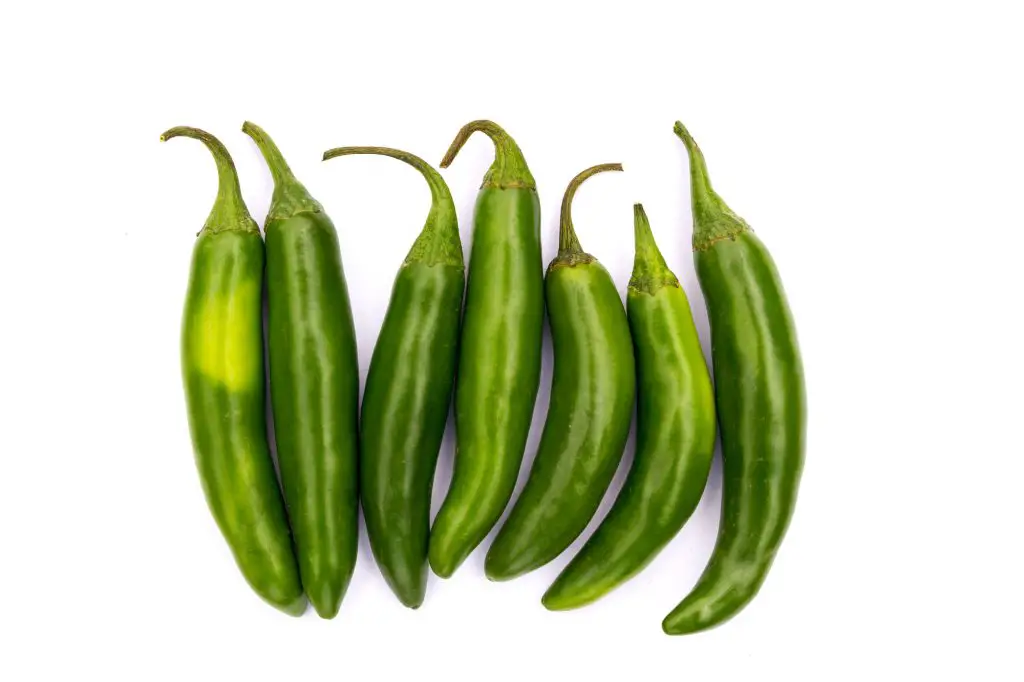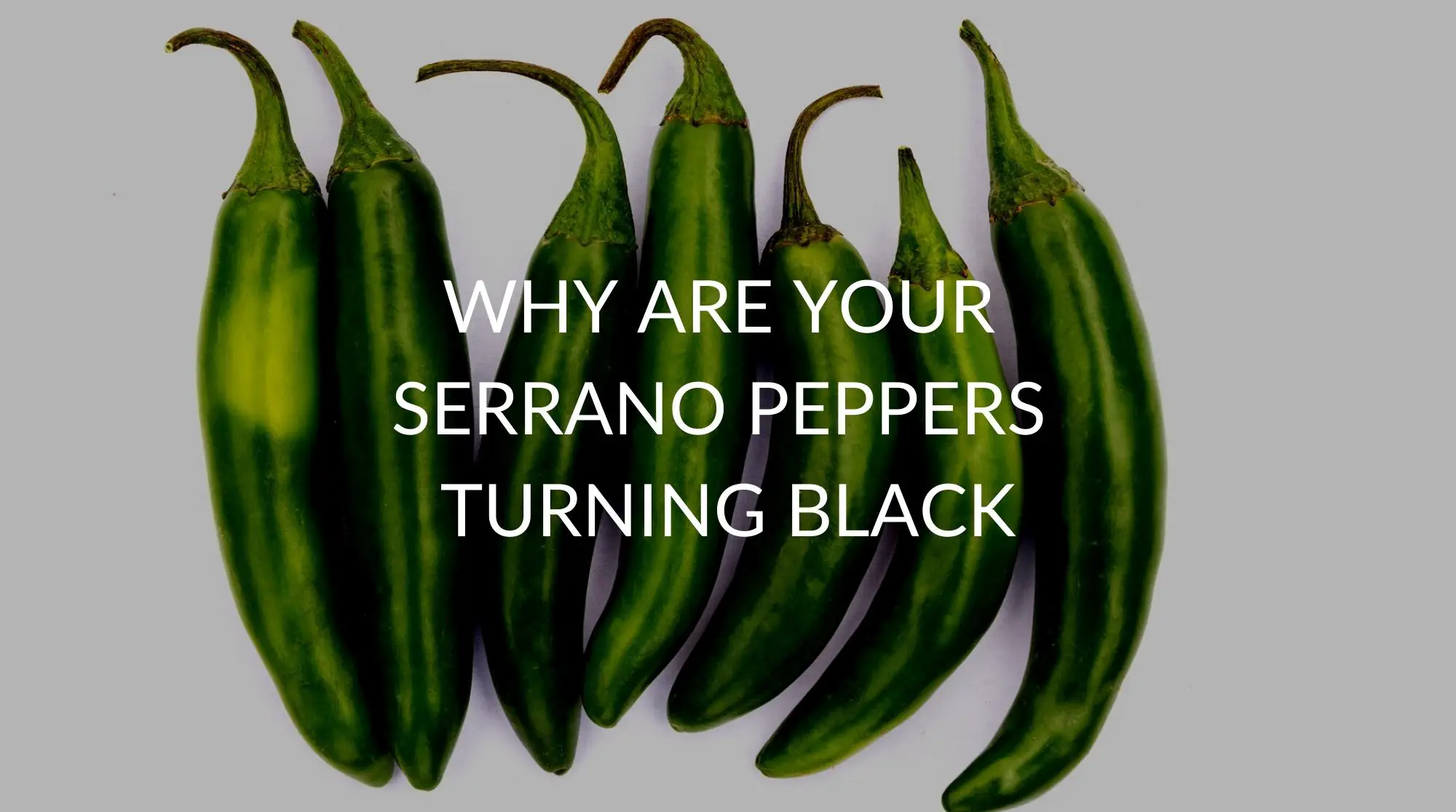Growing flavorful serrano peppers is not always easy. Some gardeners struggle with their serrano peppers having black spots. Black spots on serrano peppers can be a sign that your garden is infected with plant-killing bacteria. Or, it could be a simple case of dirty plants.
The remainder of this article will discuss what it means when a serrano pepper plant develops black spots. It will also discuss possible solutions for removing black spots from serrano pepper plants.
Does My Serrano Pepper Turning Black Mean It Has a Disease?
When serrano pepper plants turn black, it is not always a sign of major disease. Most times, serrano peppers that have black spots are suffering from blossom end rot. Blossom end rot occurs from uneven watering. Uneven watering leads to your serrano peppers not receiving enough calcium.
Blossom end rot cannot be treated. However, there are plenty of ways to ensure the remaining peppers in your garden are safe.

Why Are Your Serrano Peppers Turning Black?
Several things can lead to your serrano peppers turning black, such as blossom end rot and [what]. It is important to keep a close eye on your serrano peppers during the growth stage to prevent them from developing ailments.
Blossom End Rot
Blossom end rot is the most common reason that serrano peppers turn black on their bottoms. Serrano peppers suffer from blossom end rot when they do not receive enough water and calcium during the growth process. The lack of calcium prevents the serrano peppers from fully developing.
Pests
Pests can cause serrano peppers to become deprived of the nutrients they need to thrive. Typically, the pest infestations, like mites, lead to blossom end rot. Mites eat at the roots of the plant and therefore restrict the peppers’ ability to grow. To prevent this from happening, you must remove the pests from your garden.
Wondering why your Serrano Peppers are turning red? Click here!
Sun Exposure
Sun exposure is a huge reason why serrano peppers will change color. Typically, serrano peppers will become purple because of sun discoloration. This type of discoloration is normal, occurring naturally because of UV exposure. Unnatural discoloration from UV occurs when the pepper begins to bleach and turn white.
Dirtiness
Black spots on the base of your serrano peppers can happen because it has been covered in mud or dirt. Any black spots that are caused by dirtiness will go away after cleaning. If you have not washed your peppers after harvesting, wash them and observe whether the black spots remain.
Mold
Mold can cause parts of your serrano peppers to blacken. These areas of your serrano peppers cannot be treated by washing.
How Do You Treat Black Spot On Serrano Pepper Plants?
Treating black spots on serrano peppers varies based on the cause of black spots. Some black spots can be cured by rinsing the pepper with water. Other black spots cannot be treated and will require the disposal of the tainted serrano pepper.
Treat Pests
If pests are the reason your peppers are suffering from blossom end rot, you must treat your garden for pests. Insects like mites feast on the roots of serrano peppers, which prevents them from soaking up necessary nutrients from the soil. The lack of nutrients leads to depletion and incomplete growth. Gardeners recommend including a type of pest treatment in your garden at all times to prevent them from coming.
Washing
If the spots on your serrano peppers are caused because of dirtiness or mud, you can wash these spots off. Use warm water to rinse dirt and bacteria from the surface of your serrano pepper plants. Be sure to thoroughly wash deep crevasses.
Curious why your Serrano Peppers are not spicy? Click here to find out why!
Cutting
Most peppers with black spots are still edible; just cut the black spot off. This is applicable for serrano peppers with end rot and molded serrano peppers.
Water More
Blossom end rot occurs when there is uneven watering. If your plants are suffering from blossom end rot, it is important that you water your serrano peppers evenly, so they obtain proper calcium from the soil.
Remove the tainted serrano pepper from the garden. Any remaining serrano peppers in your garden will require extra calcium and water to thrive. Give them this attention, so they do not all end up the same.
Take Notes
You cannot reverse the effects of black spots. In the future, change your gardening habits, so you do not end up in the same situation.
Recap
Serrano peppers can turn black for several reasons, one of the most common because of end rot. There is no way to reverse the effects of black spots once they begin to form. However, there are ways to treat your plants, so you do not experience the same failures in future crop yields.
Since you cannot reverse the effects of black spots in most cases, it is more important to take notes from your experience. Learn from your watering habits, fertilizer choices, garden location, etc., so you can improve your gardening skills.


